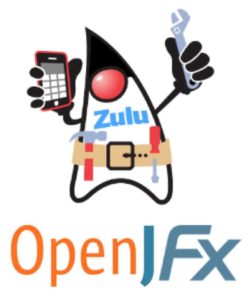

When Java was first launched, in 1995, the thing that made it really stand out was its ability to add an animation to a web page (good old tumbling Duke). Thinking about how we interact with devices today makes that sound ridiculous but, for those of us old enough to remember this, it was something almost magical.
From there, as we know, Java took the world of programming by storm and is still consistently either number one or two in the most popular programming language surveys like TIOBE and Redmonk.
What has changed from those early days is where Java is most popular. Initially, it was adding dynamic content and interactivity to web pages, but that was rapidly surpassed by Java’s popularity as a platform for serving the web page content: Java EE, app servers, and so on.
Back in 2007, at JavaOne, Sun Microsystems decided to have another go at creating technology for developing graphical user interface applications. What they launched was called JavaFX and, although built on top of the JVM, it used a scripting language rather than standard Java. (For fun, you can watch the creator of Chris Oliver, who created F3 that became JavaFX on YouTube). I remember this well and developed a number of demonstrations using it and gave many presentations. Using an entirely new scripting language did not result in a repeat of the adoption of Java as Sun had hoped.
In 2011, JavaFX 2 was released, which was a complete re-write, this time as a set of pure Java libraries. (Again, there’s a nice trip-down-memory-lane video of Jasper Potts giving a demonstration of this at JavaOne on YouTube). Over time, more has been added to this and, with CSS support, a graphical tool for designing layouts and even 3D capabilities JavaFX has become a competent and well-rounded platform.
Sadly, Oracle decided that its focus for Java is purely in the cloud and has disconnected JavaFX from the Oracle JDK as of JDK 11. The good news is that JavaFX is a separate open-source project, OpenJFX, under the broader OpenJDK umbrella.
Which brings us to what we, at Azul, are now doing with JavaFX.
For several years now, we’ve been providing the Zulu JDK as a build of OpenJDK, fully tested by the applicable TCK and offered with commercial-grade support for those who want it. For those who don’t, we have the Zulu Community Edition that is completely free.
In discussions with many potential customers, we’ve found that there are a significant number using JavaFX, typically for complex desktop applications that just can’t be implemented using the common HTML5, CSS and Javascript approach for web-based applications. To address this need, we’re now providing ZuluFX 8, our build of OpenJFX that’s available to download bundled with Zulu JDK 8. We have versions available for 64-bit Linux, Windows and macOS X. This is a full implementation including media support and WebKit for the WebView control. Download ZuluFX here.
Currently, we are only providing this for Zulu JDK 8 but expect to include support for Zulu JDK 11 soon.
As with the Zulu JDK, this is being made available completely free of charge, but if you are interested in commercial support for this, we would be delighted to discuss this. Contact us to discuss this further.
Are you interested in building powerful desktop graphical applications? Why not give it a try?




